Discover the meaning, history, and spiritual side of Japan’s beloved temple fortune tradition.
- What Is Omikuji? A Japanese Fortune-Telling Tradition
- A Moment of Prayer and Reflection
- The History of Omikuji – From Enryakuji to Sensoji
- The Meaning and Cultural Significance
- How to Draw Omikuji at Temples and Shrines (Step-by-Step Guide)
- What to Do If You Get a Bad Omikuji
- Omikuji and Japan’s Subtle Spirituality
- Try Omikuji at Sensoji Temple
- Share Your Thoughts
What Is Omikuji? A Japanese Fortune-Telling Tradition
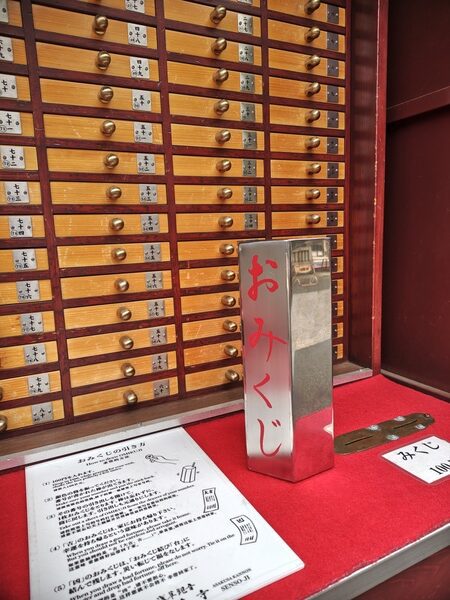
If you visit Sensoji Temple in Asakusa, one of Tokyo’s most famous landmarks, you’ll likely see people shaking a silver box and pulling out small paper slips. These are Omikuji, or Mikuji, Japan’s traditional fortune papers found at temples and shrines.
Each slip reveals a fortune that can range from Excellent Fortune (大吉) to Bad Fortune (凶). For travelers, this small ritual is both fun and deeply spiritual — a way to glimpse the Japanese approach to destiny and reflection.
A Moment of Prayer and Reflection
Before making a wish or praying for success, visitors often draw an Omikuji as a form of quiet meditation. The simple act of shaking the box and opening the paper invites reflection — a brief connection with something greater than ourselves.
The History of Omikuji – From Enryakuji to Sensoji
The origin of Omikuji dates back over a thousand years. It is believed that Ryōgen (912–985), the 18th head priest of Enryakuji Temple on Mount Hiei, developed a divination system using classical Chinese poems called gogon zetsuku (五言絶句).
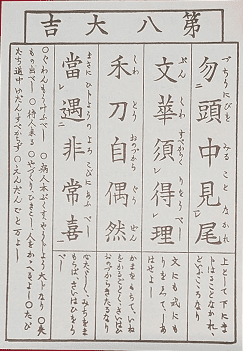
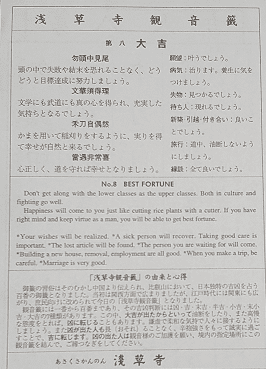
These poems were not mere predictions but spiritual teachings based on Buddhist philosophy.
Even today, the Omikuji at Sensoji Temple follows this poetic style, offering both the original verse and a modern Japanese interpretation.
The Meaning and Cultural Significance
While many people think of Omikuji as simple fortune-telling, it’s actually a reflection of Japan’s quiet spirituality. Even though surveys often show that most Japanese claim “no religion,” people still visit temples and shrines at key life moments — New Year’s, weddings, funerals, and children’s rites like Shichi-Go-San.
Omikuji reveals this unique mindset: faith not in dogma, but in harmony, gratitude, and introspection.
How to Draw Omikuji at Temples and Shrines (Step-by-Step Guide)
If you’d like to experience it for yourself, here’s how to do it respectfully:
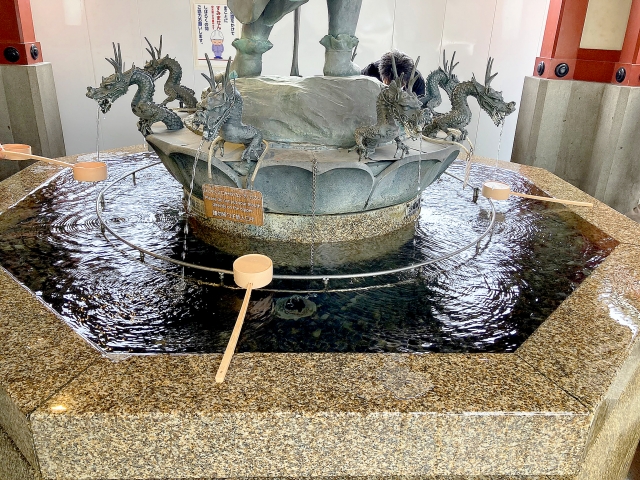
before drawing Omikuji
- Purify your hands at the temizuya (water basin) near the entrance.
- Offer a silent prayer or make a wish in your heart.
- Shake the Omikuji box gently until one stick falls out.
- The stick has a number, which matches a drawer.
- Open the drawer and take your fortune slip.
- Read your result – from Great Blessing to Great Curse.
- If it’s a bad fortune, tie it to a metal rack at the temple to leave the bad luck behind.
💡 Some temples offer English translations or illustrated versions for international visitors.
What to Do If You Get a Bad Omikuji
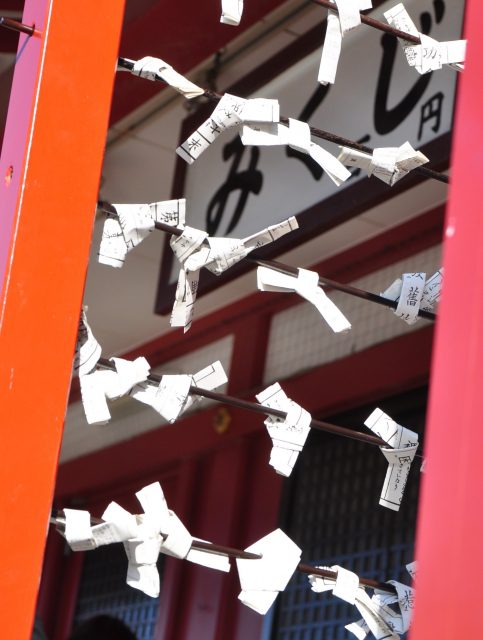
If your fortune says “Bad Luck”, don’t worry — that’s part of the charm! Japanese people believe that tying the paper to a metal rack at the temple helps leave the misfortune behind and turn it into good luck. This act is called “musubi” (結び), meaning to tie or connect. It represents letting go of bad energy and creating a bond with better fortune ahead.
Omikuji and Japan’s Subtle Spirituality
Omikuji may look like a simple souvenir, but it embodies Japan’s blended spirituality — a mix of Buddhism, Shinto, and poetry. It reminds us that life’s fortunes change, but reflection, gratitude, and sincerity always bring peace.Drawing an Omikuji is more than luck — it’s a moment to look within and listen to the quiet voice of your own heart.
Try Omikuji at Sensoji Temple
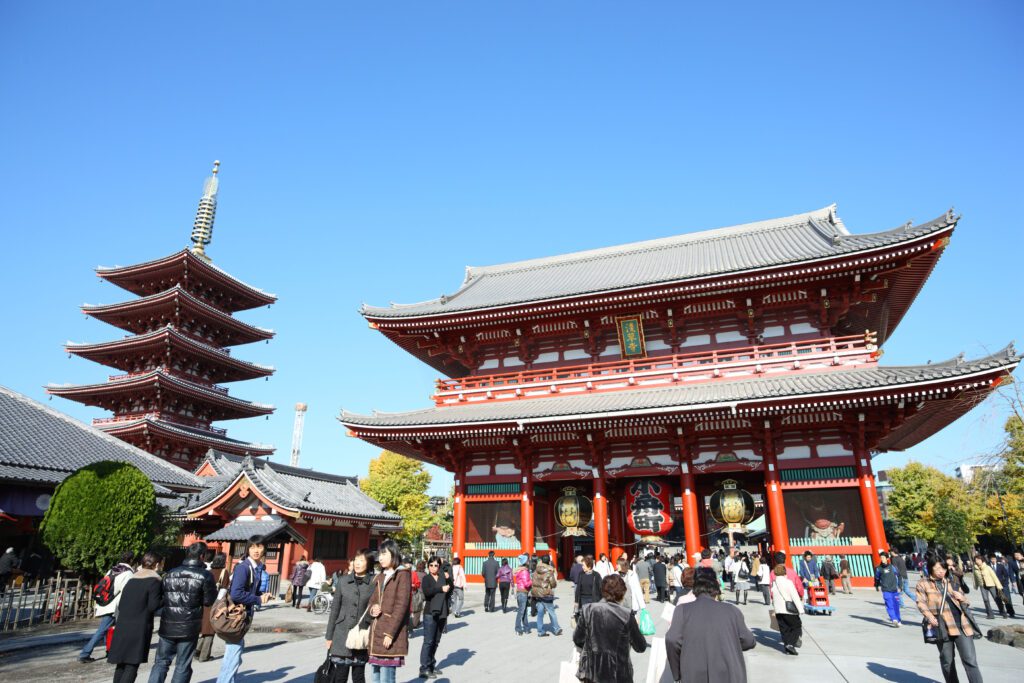
If you’re planning a trip to Tokyo, don’t miss the chance to experience Omikuji at Sensoji Temple in Asakusa. It’s one of the city’s most photogenic and meaningful spiritual spots — perfect for both reflection and a bit of fun.
👉 Find Asakusa walking tours and temple experiences here
✈️ Planning your trip to Japan?
Before exploring Asakusa or other historic towns, check the best flight and hotel deals below!
👉 Find flights to Japan with Aviasales
🏨 Book hotels in Asakusa or Tokyo with Booking.com
Or, if you prefer package-style convenience:
🌸 Check Agoda for Japan travel deals
Share Your Thoughts
Have you experienced something similar in your own culture?
Your reflections are welcome.
💬 Jump to the comment section


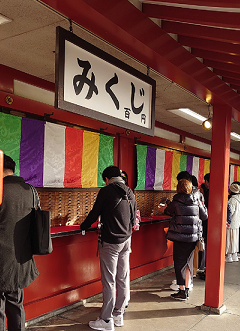


Share Your Perspective